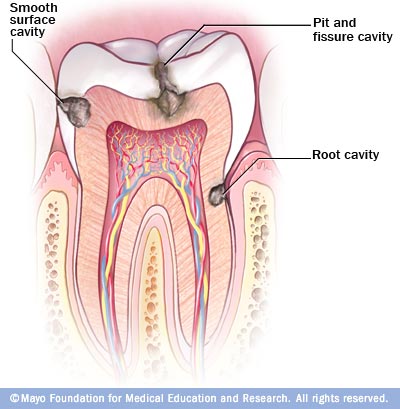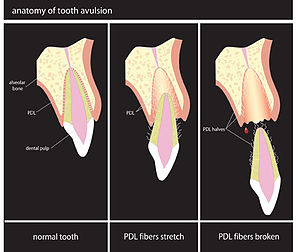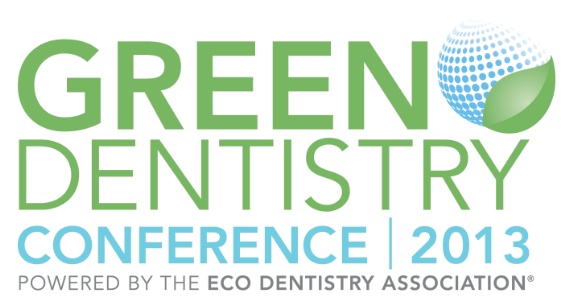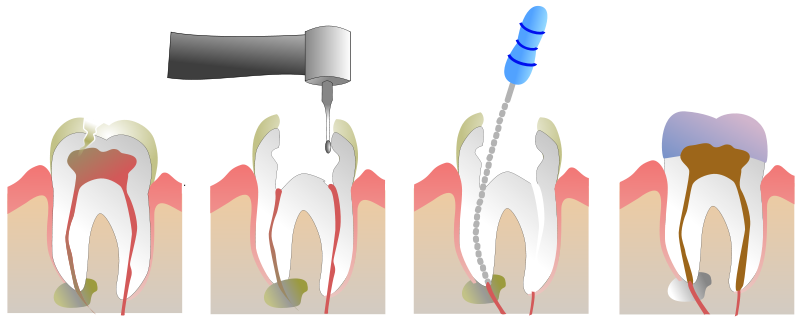Blog
SIX MOST COMMON CAUSES OF TOOTH SENSITIVITY
If you are like most people, you may brush your teeth when you wake up in the morning like most of us do and then go on to face the day. The last thing you need is to give your teeth a second thought, but then lunch time comes around, you take a nice big gulp of your ice cold beverage and it hits you! Ouch! Why is my tooth hurting?!! Tooth sensitivity can be one of the most irritating, infuriating, and bothersome things that can happen to someone. It can ruin your day and send a million thoughts into your head, one of which is “I need a dentist” or “Oh no! Do I need a root canal?!”
When it comes to tooth sensitivity, the sooner we get to the root of the problem the less likely it is that you will need a lengthy procedure to resolve it. This is one of the main reasons preventative dental care is so important. However, understanding the most common causes of tooth sensitivity will aid in prevention.
Listed here are the six most common causes of tooth sensitivity and some suggestions for reducing the likelihood that this will happen to you:
1) Sour/Acidic foods & beverages – Acids in food and beverages, such as lemons or soda will decrease the mineralization of tooth enamel making it soft and vulnerable, this is called acid erosion. Once the enamel erodes, it can leave the second layer of the tooth, the dentin layer, exposed. The dentin layer contains projections of nerves from the pulp and can be very sensitive. The best way to prevent this exposure is to avoid acidic foods and beverages, but if that is not an option, simply rinsing your mouth out with water afterwards will help to neutralize the acid environment and prevent acid erosion.
2) Plaque Buildup and Cavities – Plaque buildup is a composition of food, bacteria, and minerals that can build up along the gum line throughout the day. The bacteria in the plaque will metabolize the “food” and excrete acids as their byproduct. As stated before acid will cause demineralization of the enamel and lead to sensitivity as well as cavities which are bacteria laden holes in your teeth. The best way to avoid this is to brush and floss daily to remove the plaque and of course, visit your dentist twice a year for your routine exam and cleanings in order to detect and resolve any problems early on.
3) Bleaching – Some whitening products (and whitening toothpastes) that contain peroxide-based bleaching agents may also cause tooth sensitivity because the main ingredient acts to open the pores in the tooth to allow the bleaching material to penetrate and effervesce to remove staining. With the tooth becoming more porous, the nerves are further exposed making the teeth more sensitive. Usually this sensitivity is self limiting and after a few days the pores will return to normal thereby decreasing sensitivity. To avoid this post-bleaching sensitivity it is best to bleach your teeth at your dentist’s office where he/she can give you anti-sensitivity gel afterwards. This gel acts to remineralize the tooth and close the pores making your teeth less sensitive. If you are bleaching at home, make sure to give your teeth enough time to “heal” before attempting to bleach again. At least one week is sufficient but, the longer you wait between bleaching sessions the better.
4) Aggressive brushing – It can be counterintuitive, but brushing too hard can actually be bad for you! When you brush aggressively you run the risk of causing gum recession which can expose the roots of your teeth. Tooth roots do not have a protective enamel layer, they are composed primarily of dentin which has several nerve extensions and can be extremely sensitive. Brushing too hard can also wear away the enamel above the gum line and cause further sensitivity. The main way to prevent this is to be conscious of your brushing force. Choose a toothbrush with a soft head and be gentle. Switching to an electric toothbrush may also solve the problem as you don’t need to apply any force, simply hold it in place and it will do all the work for you.
5) Grinding or clenching your teeth – Most of you don’t even know you are doing it but grinding, or bruxism, can be very damaging not only to your jaw but to your teeth as well. Enamel is the strongest tissue in your body, but it’s no match for the grind or clench of your jaw! Grinding can cause tooth wear (attrition) and again, decrease the amount of enamel and expose the dentin of a tooth making it sensitive. Clenching can cause further damage by creating stress fractures in the tooth exposing the nerve directly. An easy way to prevent this is to get a mouth guard or night guard. This is a simple device that can be made at your dentist’s office to fit your teeth and prevent you from grinding them away! Unfortunately grinding or clenching your teeth is directly related to the amount of stress in your life, so another, more difficult but equally effective way is to make some lifestyle changes and decrease your stress level. A healthy diet and exercise are always a good start!
6) Cracked teeth – Enamel may be the strongest tissue in our bodies, but it can only withstand so much. We put our teeth through a lot on a daily basis and sometimes the pressure becomes too great and they may break or “crack”. Sometimes these cracks can be superficial but often times they run deep into the tooth and expose the nerve directly causing a tremendous amount of sensitivity and pain. The only way to prevent a cracked tooth is to watch what you are eating. Don’t attempt to chew anything that is so hard it hurts to eat it! Often times cracked teeth are the conclusion of an accumulation of dental problems causing the tooth to be so weak that it breaks. Often times it is a tooth that has an old leaking silver filling (amalgam) that needs to be replaced. To prevent this make sure to see your dentist twice a year for a routine exam to detect any problems that would otherwise go unnoticed.
In conclusion, one of the key ways to decrease the likelihood of tooth sensitivity is to prevent dental problems in the first place. Visit your dentist before a problem happens, you’d be surprised what can be prevented with routine dental care! We are always here to help!
Dr. Rima Shaer
The Eco-Dentistry Association (EDA) Going to Hold its First Conference
The Eco-Dentistry Association (EDA) Going to Hold its First Conference
The Eco-Dentistry Association is an organization that focuses on bringing “green dentistry” options to Dental Professionals and providing general dental resources and directories for Dental Patients. EDA green dentistry standards and best practices help dental professionals implement cost-saving, eco-friendly initiatives, while maintaining the highest standards of patient and practitioner safety.
They are launching an event, where the focus is to present new green technologies for dental practices. There will be continuing education credits available for those looking, but space is limited to the first 100 registrants. It will showcase “A” list dental speakers to help you learn the essentials of green dentistry, including Gary Takacs, Marty Jablow, Paul Feuestein, and John Flucke. They will be displaying topics like modern dental business philosophy in the new green world, and the newest green technology available for dentists. They are interested in helping you reduce waste, save energy, and boost your practice’s bottom line.
There is also a promise that “Unique, small group, hands-on opportunities with dental technology such as lasers and CAD/CAM systems will also be available” at this convention.
It is being held at The Sundance Resort, surrounded by the pristine nature of Sun Dance Valley at the base of Mount Timpanogos. Sundance is conveniently located only 55 minutes from the Salt Lake City International Airport.
What is a Cavity? What Happens When I Get a Cavity?

So, what is a Cavity? Cavities are what they sound like; they are holes that occur in your teeth. They typically occur because of tooth decay that wears away at the tooth structure. The tooth has two protecting layers from the pulp. The first is the enamel (the outer protective wall), and the second is the dentin (the inner protective wall). When a hole is created in your outer level, you have a cavity.
The easiest way to discover a cavity is to probe it with a dental instrument. It will often catch on the surface and is very recognizable to someone with experience and training. X-rays can also show cavities in your teeth and are often the preferred method of finding cavities in between teeth.
When a cavity goes past the enamel and the dentin, your tooth has a hole that reaches the dental pulp. The pulp may be very sensitive to hot and cold, and runs a risk of infection. If your dentist discovers the cavity before the pulp gets infected (often even before it reaches the pulp), he/she may do a filling. They will drill away the damaged portion of the tooth and replace it with a dental material.
If the damage to the tooth is more than a single cavity but a serious of cavities and involves extensive decay of the tooth, you may need a crown. This is where your dentist essentially drills away the decaying parts of the tooth, builds it back up, and then covers it with a crown. This is a common route to take also if the tooth has been fractured by trauma as opposed to dental cavities.
If the tooth becomes infected, it will cause lingering pain and may be incredibly sensitive. Once infected, they will need to perform a root canal to the dead pulp, and seal the apex of the tooth. The rest of the tooth will be built-up and covered by a crown to protect it from fracturing. Endodontically (root canal) treated teeth lose their innervation and blood supply and over time may become brittle and fracture. A crown will cover the tooth and prevent this from happening.
What is a Closed Apex and what is an Open Apex?
We talked about the apex of the tooth is (root’s tip), so I want to discuss terms that you will hear often when talking about the apex of a tooth. These include a “closed apex” and an “open apex.
Closed Apex this is the apex in its normal form where it is connected to the tooth without any gaps in the connection. This is a fully formed healthy tooth that is not diseased at the apex. When an Apex is open, and it becomes closed, it is called a sealed apex. This occurs when the dentist goes in and must seal the apex closed so the gaps won’t lead to an infection. This is typically done during root canals and is sometimes the entire need for a root canal.
Open Apex
An open apex is when there is a gap in the pulp that is connecting the tooth to the jaw. The tooth can still get some nutrients if there is a connection. Immature and under-developed teeth have an open apex naturally, so when people typically talk about an open apex in a diseased tooth, they are referring to teeth that have dying or dead pulp (called a necrotic open apex).
An open apex can also occur because of blunt trauma creating an artificial gap in the tooth that may heal on its own or with assistance. An unsuccessful healing gap in the tooth’s pulp will most often lead to an abscess, so when an open apex occurs in blunt force trauma dentists will often want to do a root canal immediately to prevent further complications (infected roots in extreme cases can kill you).
Avulsed Tooth Treatment
 An avulsed tooth is when a tooth is completely knocked out from its socket in the alveolar bone. This occurs almost exclusively because of dental trauma. As always, prevention is key and it is always recommended to use helmets and mouth guards whenever participating in sports or events where tooth trauma may be possible.
An avulsed tooth is when a tooth is completely knocked out from its socket in the alveolar bone. This occurs almost exclusively because of dental trauma. As always, prevention is key and it is always recommended to use helmets and mouth guards whenever participating in sports or events where tooth trauma may be possible.
When dental avulsion occurs to a permanent tooth, it should be handled like a dental emergency, as its one of the few actual dental emergencies that can actually happen. The tooth should be gently rinsed with water, but care should be taken not to touch the root and handle it as minimally as possible. The dentist may attempt to replace it and splint it to the adjacent teeth for several weeks to stabilize it. There is a chance that it will fail to be successfully re-implanted, especially if it takes longer than an hour for it to reach the dentist.
The tooth needs constant nourishment through its ligaments into the pulp. When it is knocked out, all the ligaments become severed along the root of the tooth. The hope is that if they place the ligaments next to each other, they will reattach and heal. One of the key parts of making sure this is a success, is making sure to prevent cell crushing. This happens when you touch the root of the tooth, and whenever a part of the tooth is touched that is not the crown. If the cells of the ligament get crushed, they will be unable to reattach to the other end of the ligament and heal properly.
Dentists often recommend that locations where a tooth may be lost keep a storage container suitable to store the tooth in order to extend the time before the tooth can be reattached. The most common ways to store it is in saliva, saline, milk, and balanced pH fluids. The mouth can be the best place to store it, but it almost guarantees that it will have cell crushing making it hard to re-implant. There are kits of solution that tend to be the most effective method of preserving the tooth, some allowing it to last up to 24 hours with minimal cell death. The tooth needs to stay moist, but it can’t be safely kept in water because the pH levels are too low so it ends up killing the cells. The low pH levels cause the cells to burst.
Tooth avulsion occurs more than you may think. Every year in the United States there are approximately 5 million reported cases. This happens traditionally in school aged children and military personnel as well as professional fighters and individuals who play contact sports. If a tooth does not recover in time, it typically ends with a Dental Implant.

